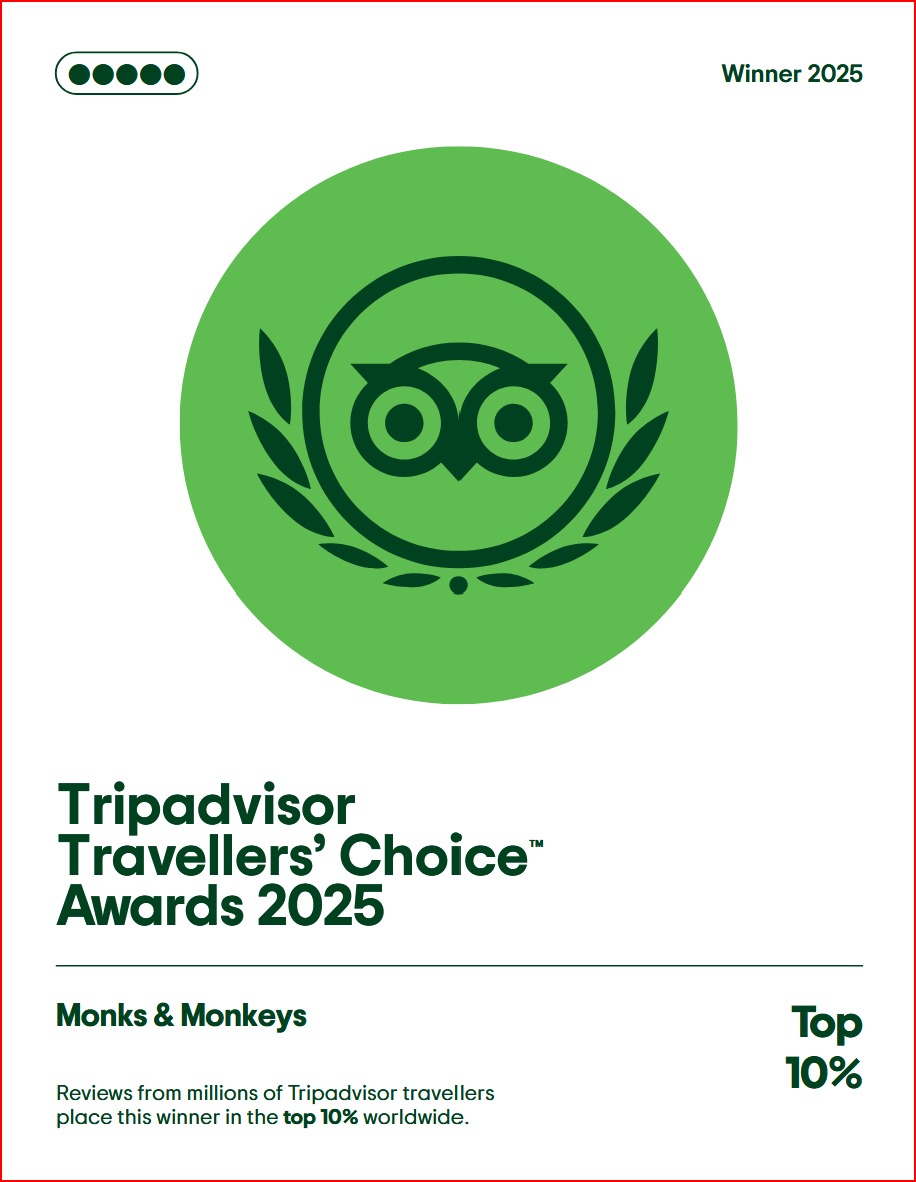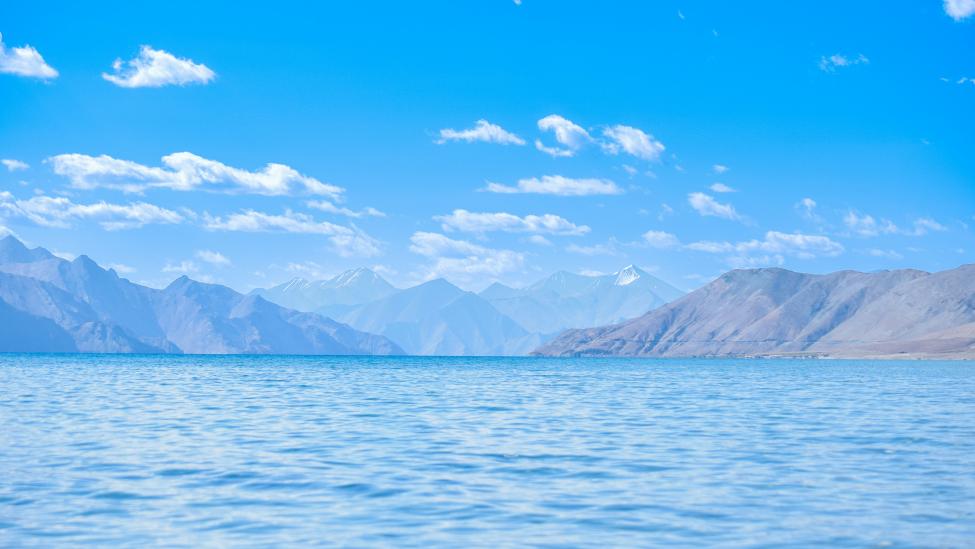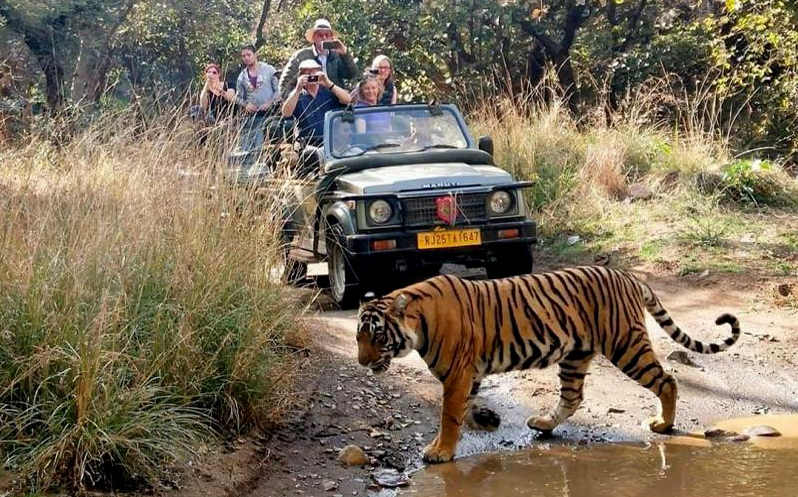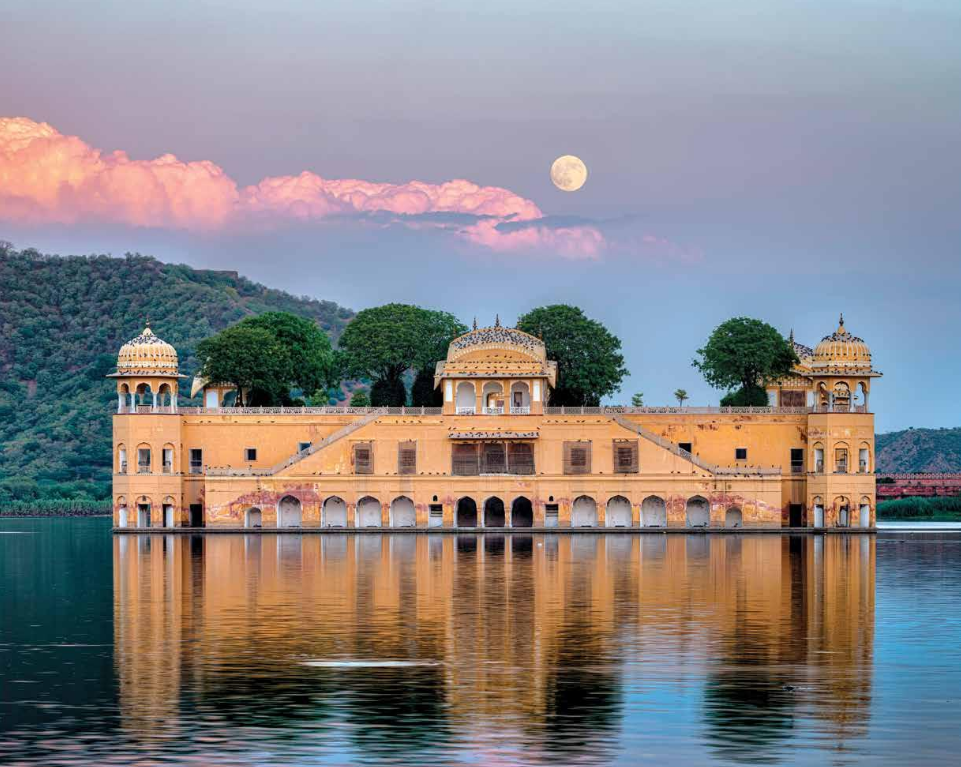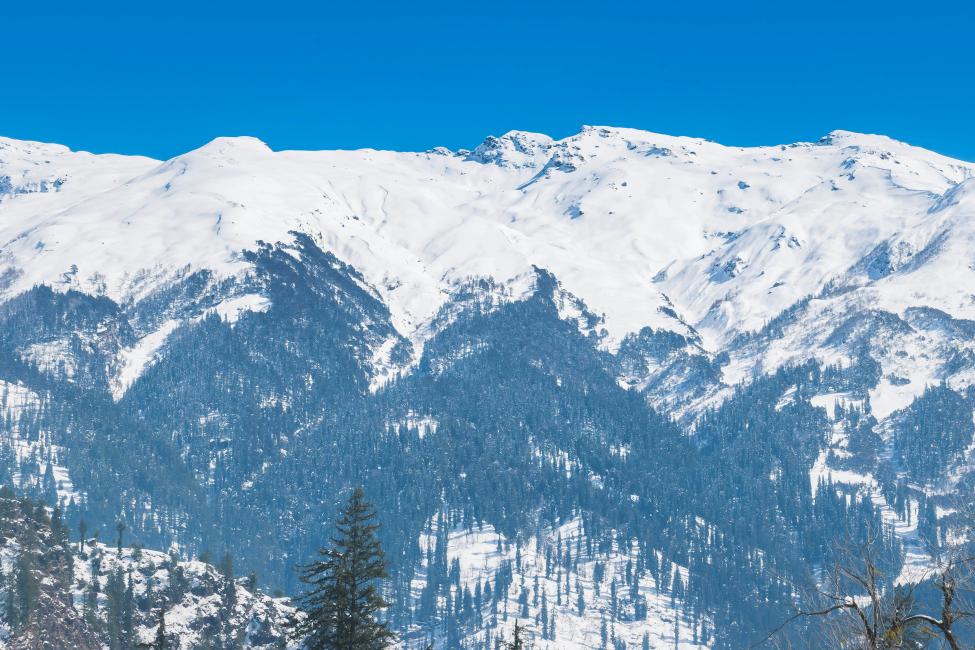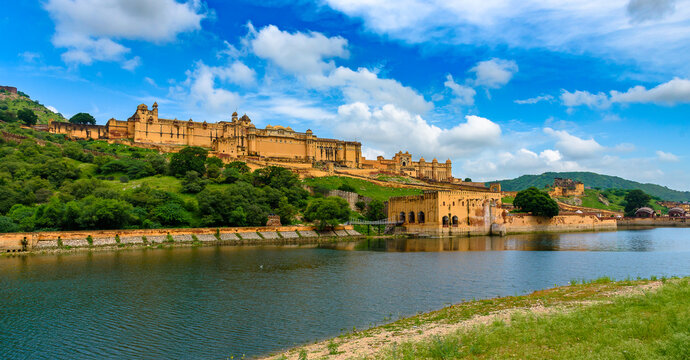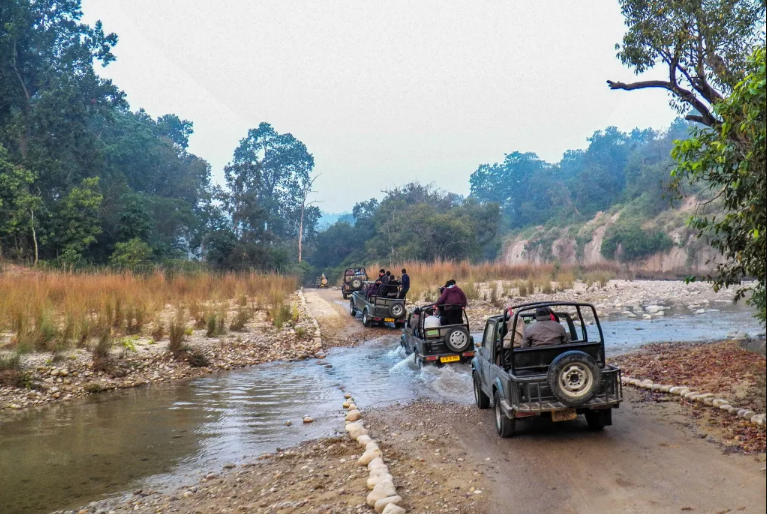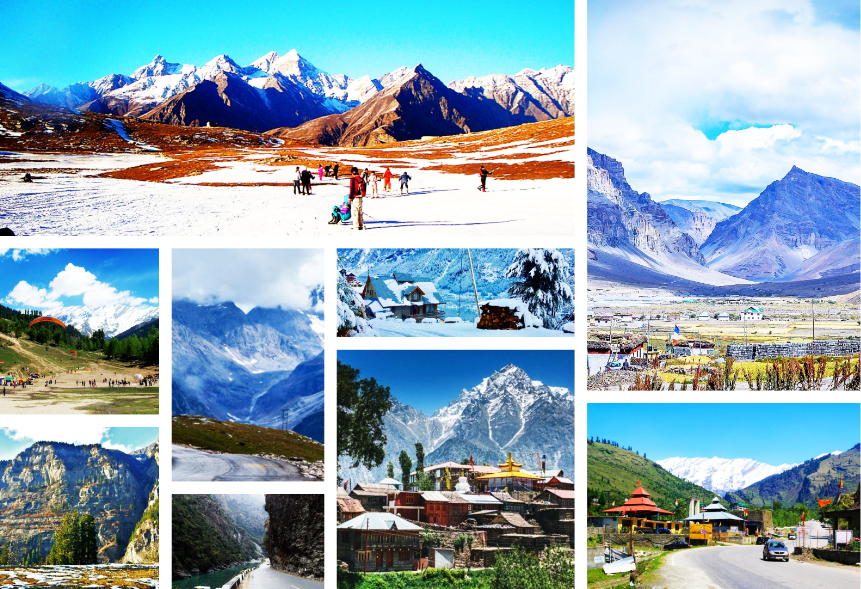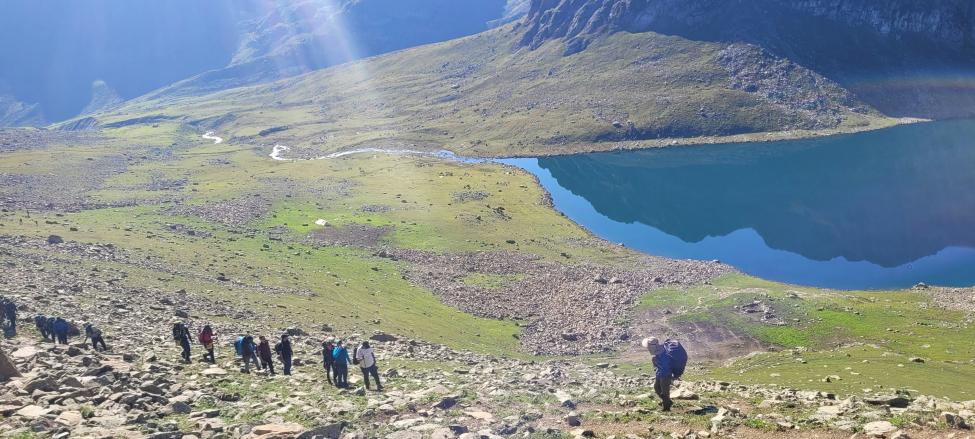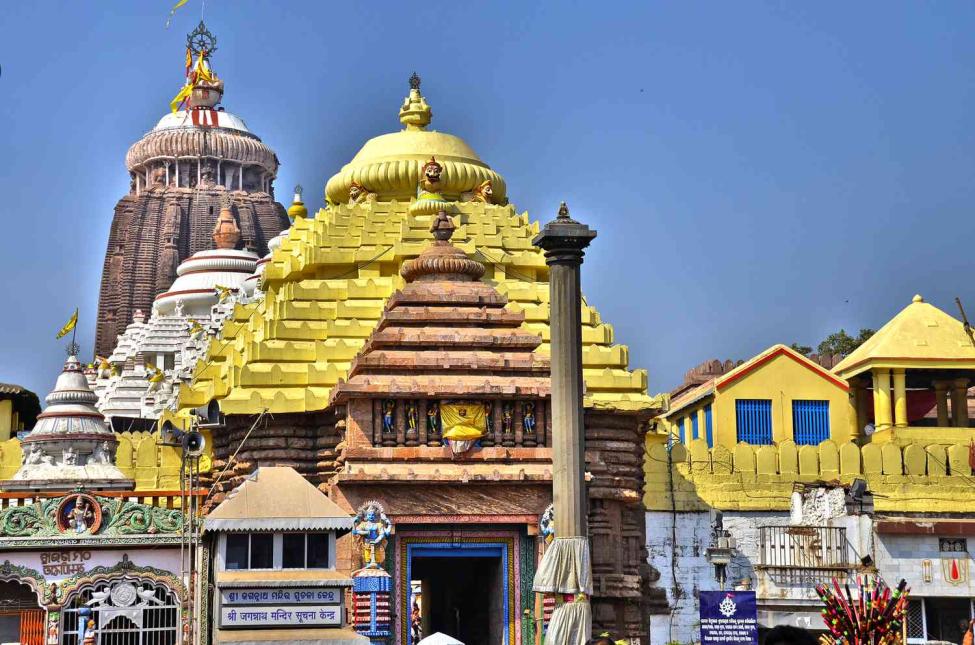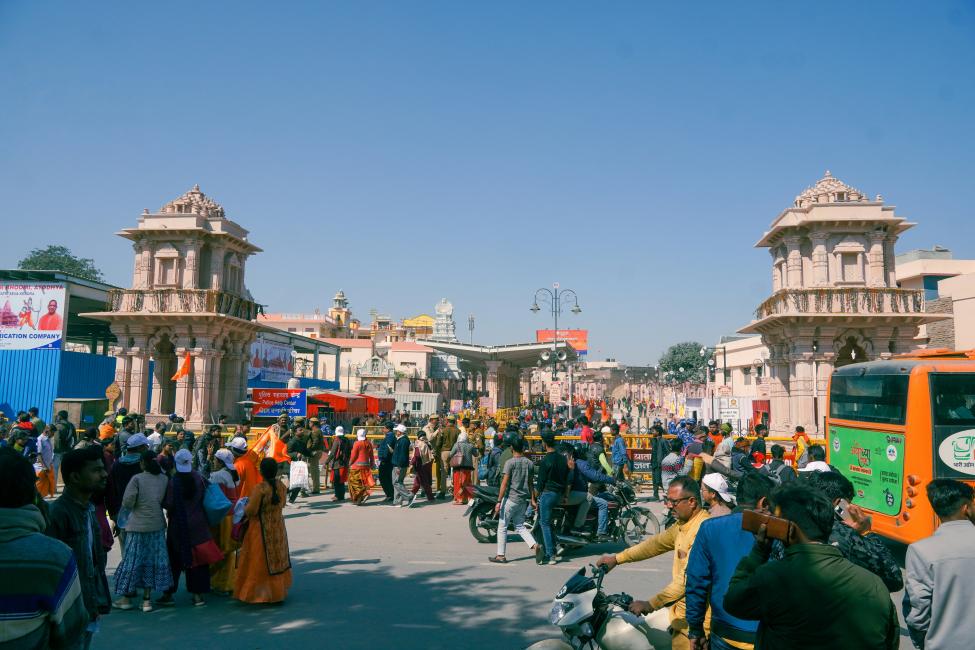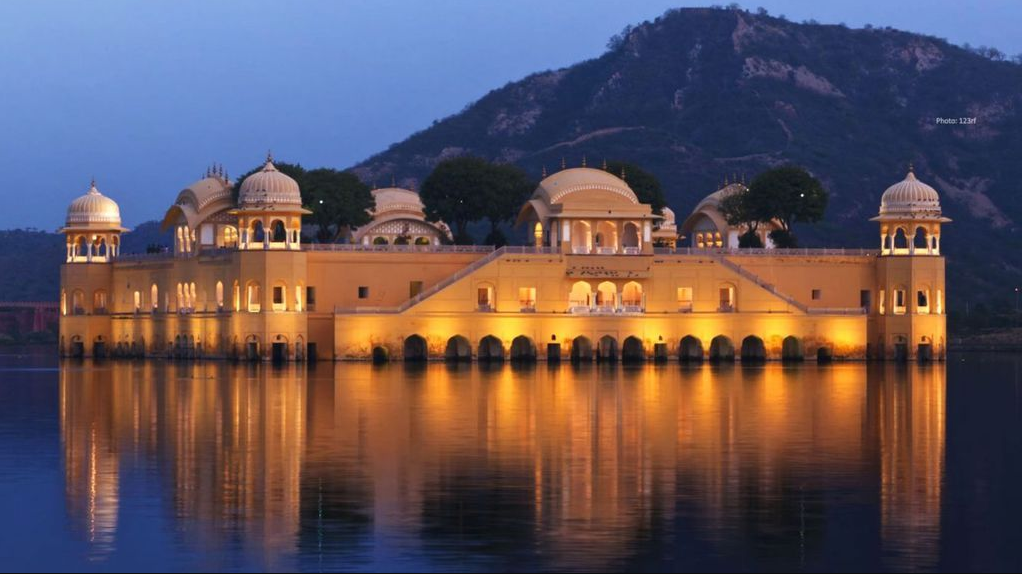 Jal Mahal, Jaipur
Jal Mahal, Jaipur
Jaipur - The Pink City of India: A Complete Travel Guide
Jaipur, the Pink City of India, is famous for its grand forts, royal palaces, and colorful bazaars. A UNESCO World Heritage City, it showcases rich Rajput architecture and vibrant culture. Must-visit attractions include Amber Fort, Hawa Mahal, City Palace, and Jantar Mantar.
Jaipur "Pink City of India"
Jaipur, the capital of Rajasthan, is one of India’s most vibrant and culturally rich cities. Founded in 1727 by Maharaja Sawai Jai Singh II, it is known as the Pink City due to its distinct rose-colored architecture, originally painted to welcome the Prince of Wales in 1876.
A perfect blend of royal heritage and modern charm, Jaipur boasts stunning landmarks like Amer Fort, City Palace, and Hawa Mahal, along with colorful markets offering everything from gemstones to traditional textiles.
Food lovers can indulge in authentic Rajasthani cuisine such as Dal Baati Churma and Laal Maas, while culture seekers can experience folk music, festivals, and traditional dances like Ghoomar.
Part of India’s famous Golden Triangle (Delhi–Agra–Jaipur), the city is a must-visit destination for history buffs, foodies, shoppers, and photographers alike. Click here for Jaipur Packages
Why is Jaipur Called the Pink City?
Nicknamed the "Pink City", Jaipur earned this title in 1876 when the entire city was painted a terracotta pink to welcome the Prince of Wales (later King Edward VII). The tradition of pink buildings continues today, giving the city a unique and visually stunning identity.
How to reach Jaipur?
By Air: Jaipur International Airport
By Train: Jaipur Junction is well-connected to major Indian cities
By Road: Easily accessible via NH8, especially from Delhi (approx. 5 hours)
Top Places to Visit in Jaipur
1. Amer Fort:
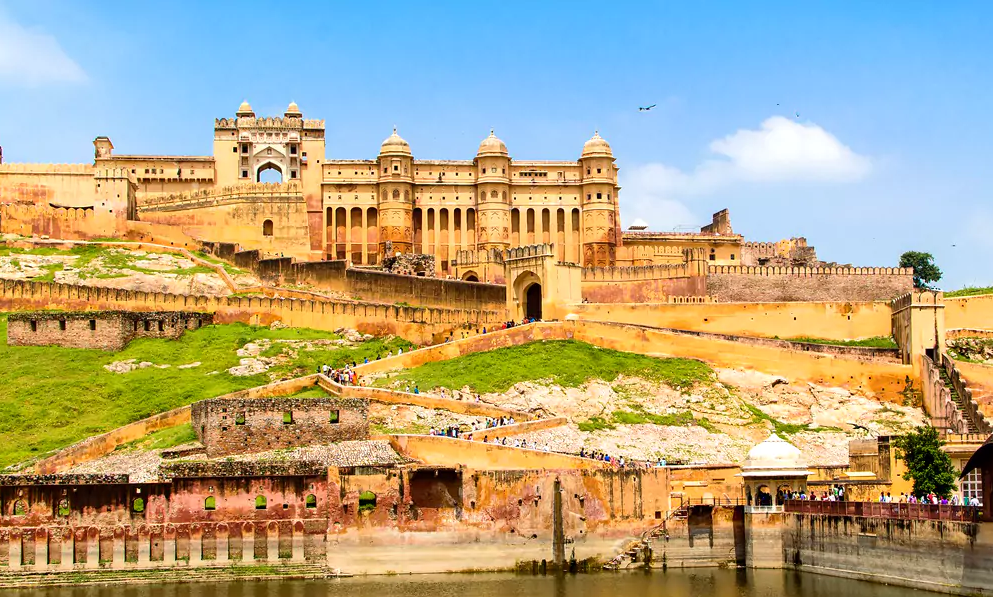
Amer Fort, located just 11 km from Jaipur, is a stunning hilltop fortress built in 1592 by Raja Man Singh I. Made of red sandstone and white marble, it beautifully blends Rajput and Mughal architecture. The fort is famous for the Sheesh Mahal (Mirror Palace), with walls decorated in tiny mirrors that sparkle in the light.
Other key attractions include the Diwan-e-Aam, Diwan-e-Khas, and Sukh Niwas, which featured an early cooling system. Overlooking Maota Lake, the fort offers breathtaking views and a rich royal ambiance. It is also a UNESCO World Heritage Site and hosts a popular light and sound show in the evenings.
2. City Palace
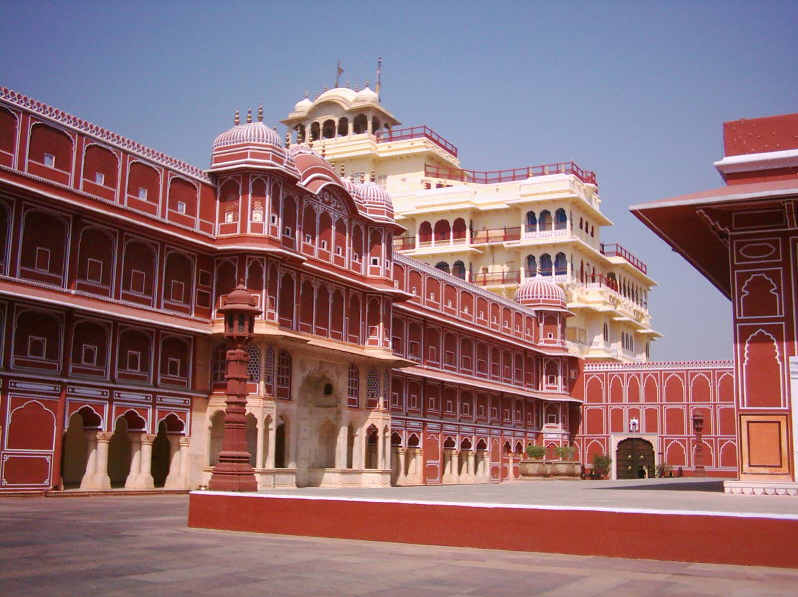
Located in the heart of Jaipur, City Palace is a magnificent complex that showcases a blend of Rajput and Mughal architecture. Built by Maharaja Sawai Jai Singh II, the founder of Jaipur, the palace served as the seat of the royal family. The complex includes beautiful courtyards, gardens, and buildings such as the Mubarak Mahal and Chandra Mahal. Part of the palace is now a museum displaying royal costumes, weapons, and artifacts, while the rest is still home to Jaipur’s royal family.
Intricate artwork, stunning gateways, and traditional Rajasthani design make City Palace a must-visit for history and architecture lovers.
3. Hawa Mahal (Palace of Winds)
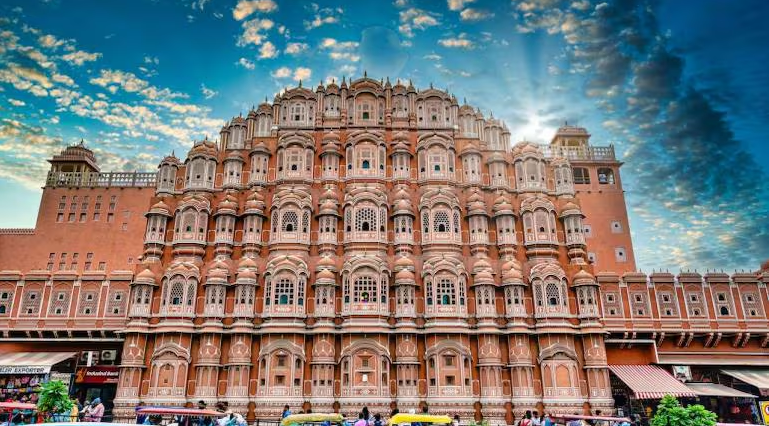
Hawa Mahal, one of Jaipur’s most iconic landmarks, was built in 1799 by Maharaja Sawai Pratap Singh. This five-story pink sandstone structure features 953 small windows (jharokhas) designed to allow royal women to observe street life and festivals without being seen.
The lattice design also allows cool air to circulate, making the palace naturally ventilated—hence the name “Palace of Winds.” Its unique beehive-shaped façade is a popular spot for photography and symbolizes Jaipur’s rich architectural heritage.
4. Jantar Mantar
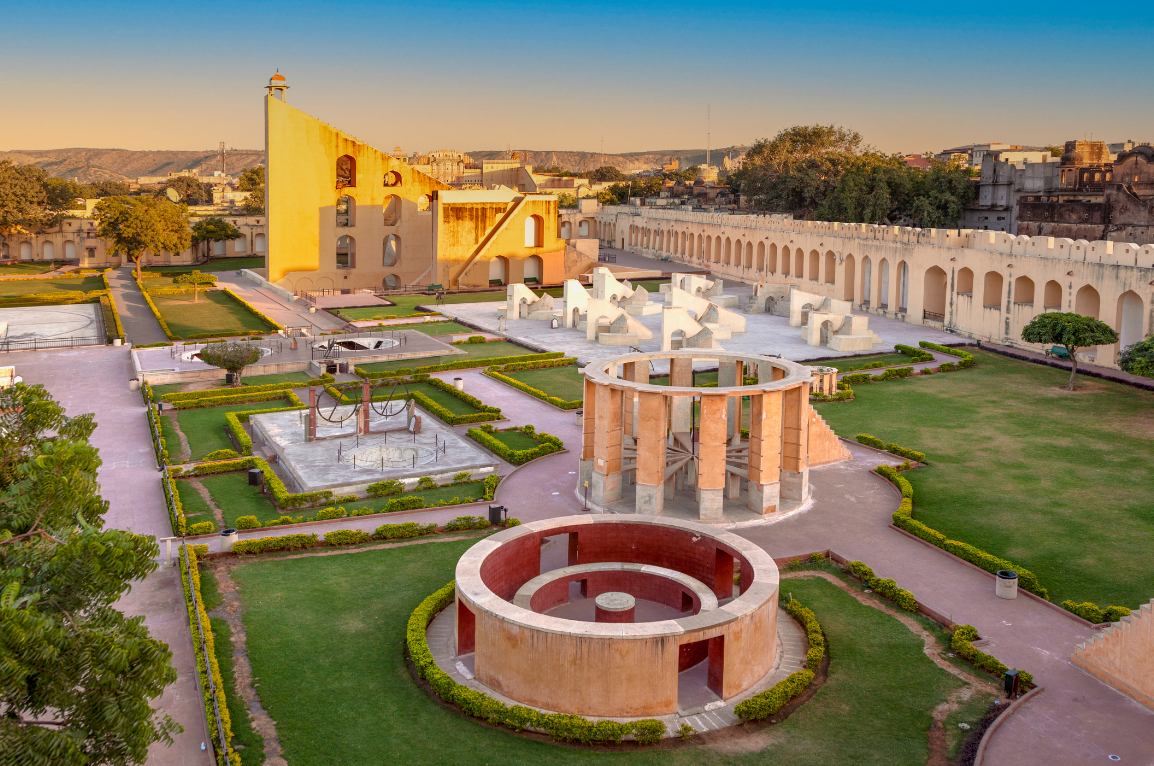
Jantar Mantar is an extraordinary astronomical observatory built in 1728 by Maharaja Sawai Jai Singh II. It features the world’s largest stone sundial and 19 architectural instruments used to measure time, track celestial bodies, and predict eclipses.
A UNESCO World Heritage Site, Jantar Mantar reflects the scientific advancements of 18th-century India and remains one of the best-preserved observatories of its kind. It’s a must-visit for science enthusiasts and history lovers alike.
5. Nahargarh Fort
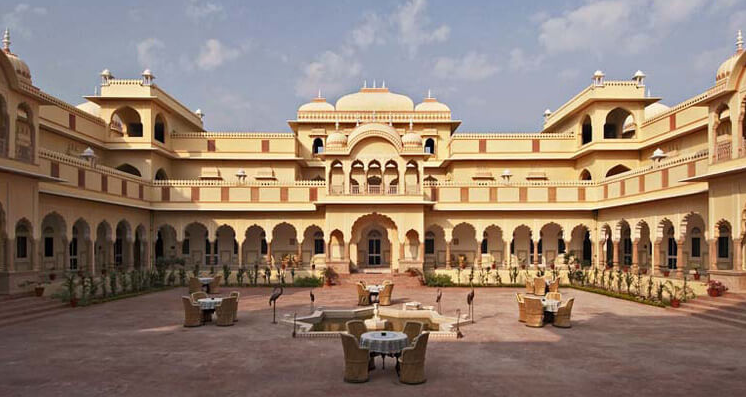
Perched on the Aravalli Hills, Nahargarh Fort offers stunning panoramic views of Jaipur, especially at sunset. Built in 1734 by Maharaja Sawai Jai Singh II, it served as a defensive stronghold and a retreat for the royal family.
The fort features beautiful interiors, royal suites, and the Madhavendra Bhawan, a palace built for the king’s queens. Its peaceful ambiance and scenic backdrop make it a favorite spot for photographers and nature lovers.
6. Jal Mahal (Water Palace)
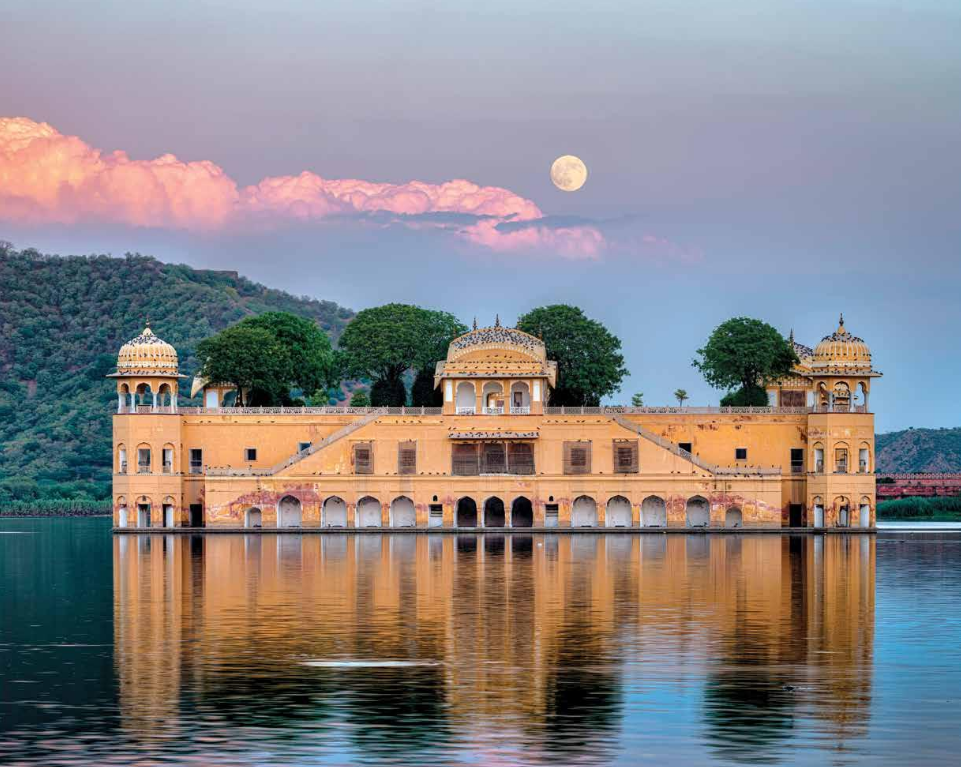
Jal Mahal, meaning “Water Palace,” is a beautiful architectural marvel located in the middle of Man Sagar Lake. Built in the 18th century by Maharaja Madho Singh I, the palace appears to float on water, offering a serene and picturesque view.
Though entry inside the palace is restricted, it’s a popular stop for photography, sunset views, and peaceful walks along the lake promenade. Its blend of Rajput and Mughal styles makes it one of Jaipur’s most iconic sights.
7. Jaigarh Fort
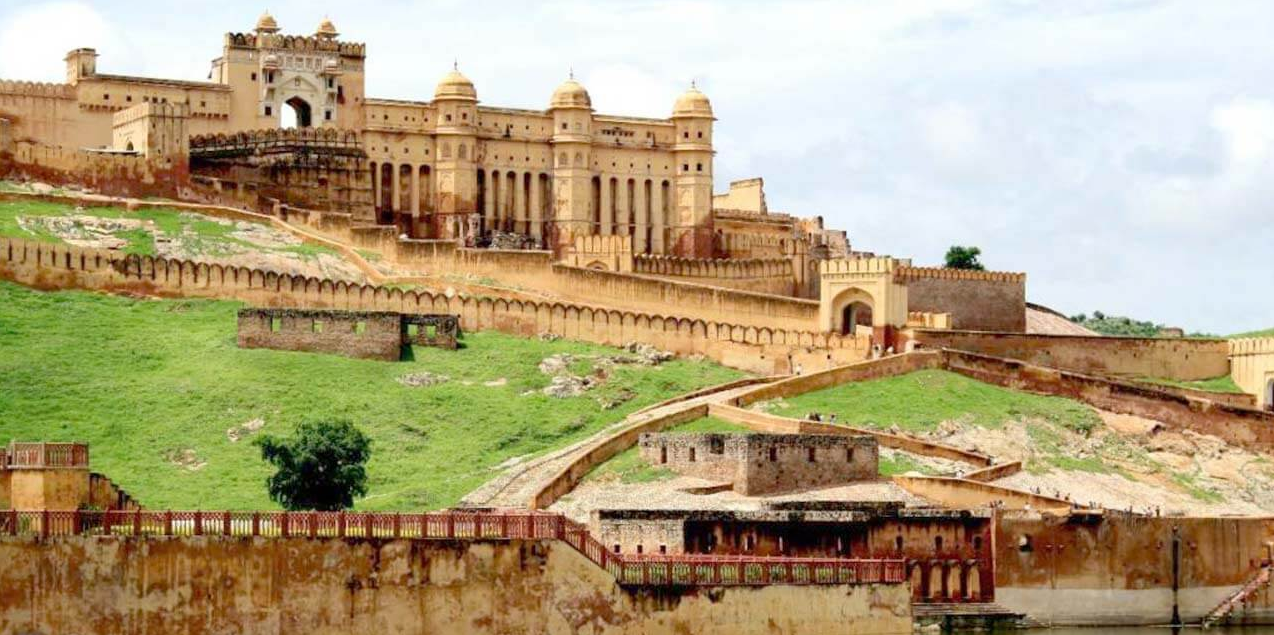
Jaigarh Fort, built in 1726 by Maharaja Sawai Jai Singh II, is a massive fort located on the Aravalli Hills, overlooking Amer Fort and Maota Lake. Known as the “Fort of Victory,” it was built to protect Amer Fort and the palace complex.
The fort houses the world’s largest cannon on wheels, the Jaivana Cannon, and features underground passages, watchtowers, and a museum showcasing weapons and armor. With its solid structure and military history, Jaigarh Fort offers a glimpse into Jaipur’s royal defense system and panoramic views of the surrounding landscape.
8. Albert Hall Museum
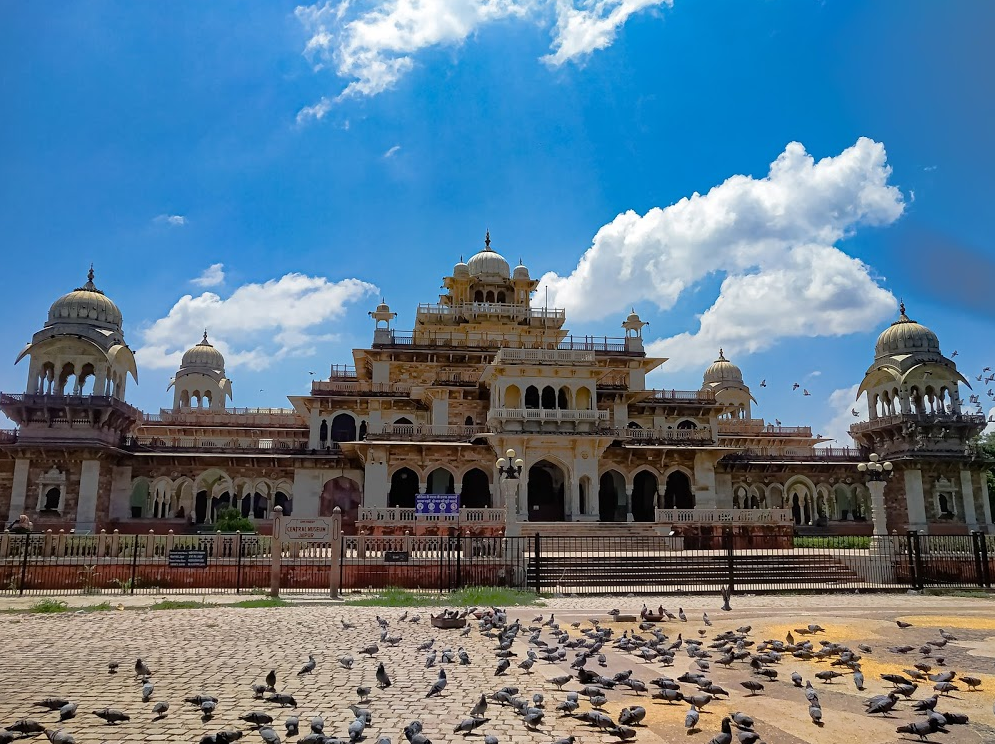
The Albert Hall Museum, located in Ram Niwas Garden, is the oldest museum in Rajasthan, built in 1876 in Indo-Saracenic style. Named after Prince Albert of England, it features a grand facade and beautifully detailed architecture. Inside, the museum houses an impressive collection of ancient artifacts, including weapons, paintings, sculptures, pottery, textiles, and even an Egyptian mummy. It offers a fascinating insight into Rajasthan’s rich cultural and artistic heritage.
At night, the museum is beautifully lit, making it a popular spot for both daytime exploration and evening photography.
9. Sisodia Rani Garden
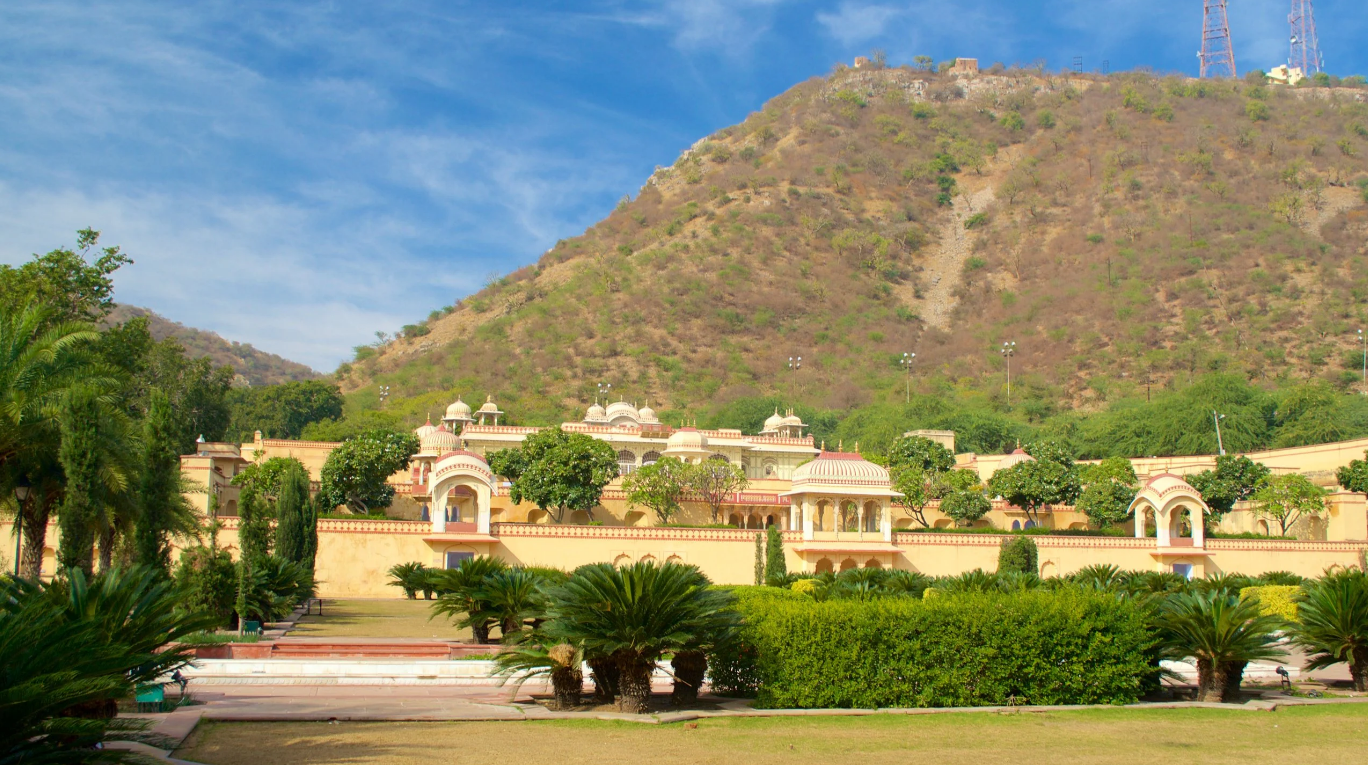
Sisodia Rani Garden, built in 1728 by Maharaja Sawai Jai Singh II, is a beautiful Mughal-style terraced garden located about 6 km from Jaipur city. It was created as a royal retreat for his queen, Sisodia Rani, and symbolizes love and serenity.
The garden features multi-level terraces, flowing fountains, painted pavilions, and lush greenery, all set against the backdrop of the Aravalli Hills. Frescoes inside the garden depict scenes from the life of Lord Krishna, adding to its cultural charm.
10. Galtaji Temple (Monkey Temple)
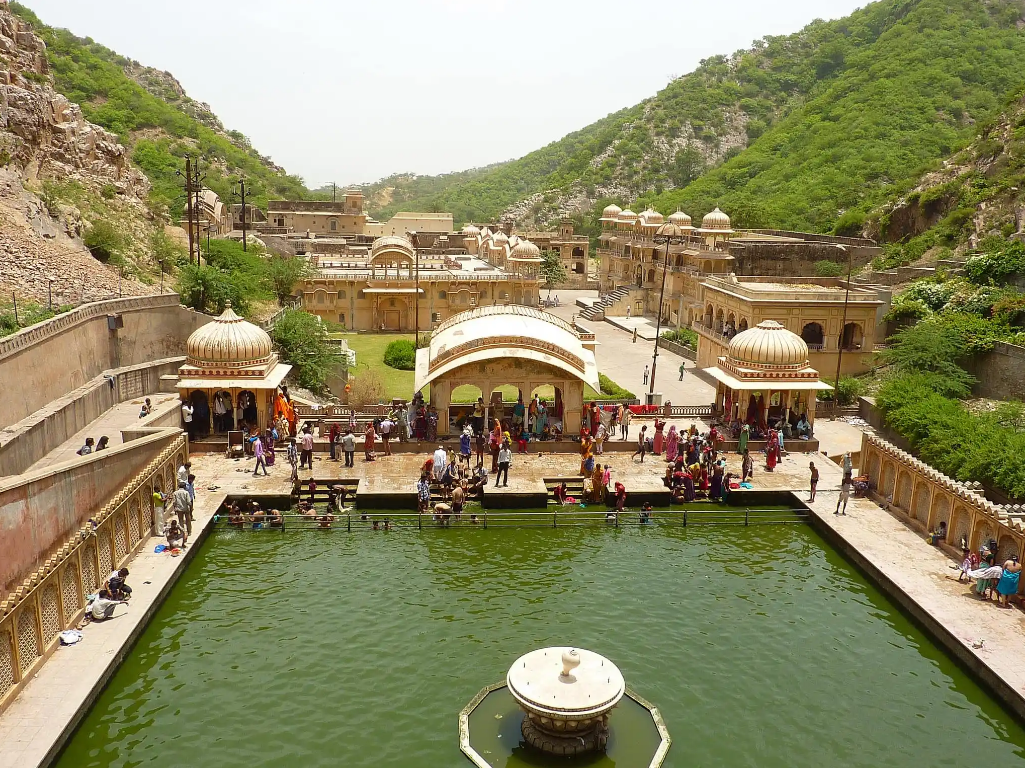
Galtaji Temple, commonly known as the Monkey Temple, is an ancient Hindu pilgrimage site nestled in the Aravalli Hills, about 10 km from Jaipur. The temple complex is built around natural freshwater springs and features several sacred kunds (water tanks) where devotees bathe.
Dedicated mainly to Lord Hanuman, the temple is home to hundreds of friendly monkeys, adding to its unique feel. The architecture includes pink sandstone pavilions, domes, and frescoes, all set in a scenic mountain pass.
It’s a peaceful and spiritual spot, offering a mix of nature, history, and devotion - perfect for both pilgrims and curious travelers.
11. Birla Mandir (Laxmi Narayan Temple)
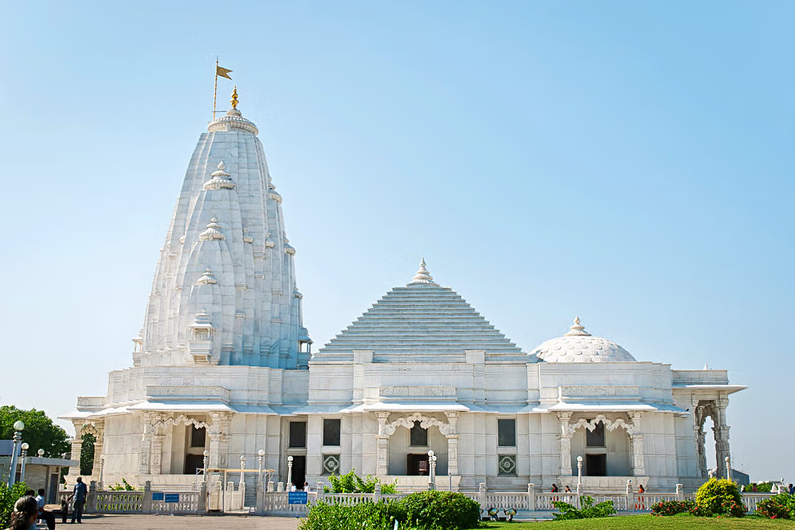
Birla Mandir, also known as the Laxmi Narayan Temple, is a beautiful white marble temple located at the base of Moti Dungri Hill in Jaipur. Built by the Birla family in 1988, it is dedicated to Lord Vishnu (Narayan) and Goddess Lakshmi, the goddess of wealth. The temple features intricate carvings, elegant domes, and stained glass windows depicting scenes from Hindu scriptures. Its serene atmosphere, especially at sunset, draws both devotees and tourists alike.
Surrounded by peaceful gardens, Birla Mandir is a perfect place for quiet reflection and a glimpse into Jaipur’s spiritual side.
12. Chokhi Dhani Village Resort
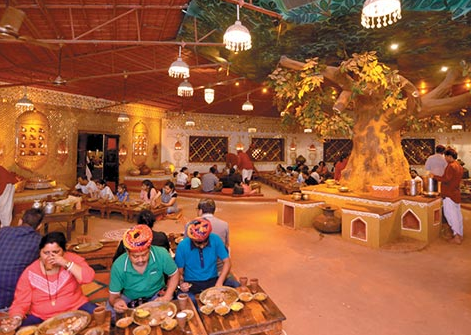
Chokhi Dhani is a cultural village resort located on the outskirts of Jaipur that offers an immersive experience of traditional Rajasthani life. Designed like a rural village, it features folk dance performances, puppet shows, camel and bullock cart rides, and more.
The highlight is its authentic Rajasthani cuisine, served in a traditional setting with warm hospitality. Visitors can also enjoy arts and crafts, henna, and games, making it a fun-filled experience for all ages.
Perfect for families and tourists, Chokhi Dhani is a must-visit to enjoy the colors, flavors, and culture of Rajasthan in one place.
13. Central Park
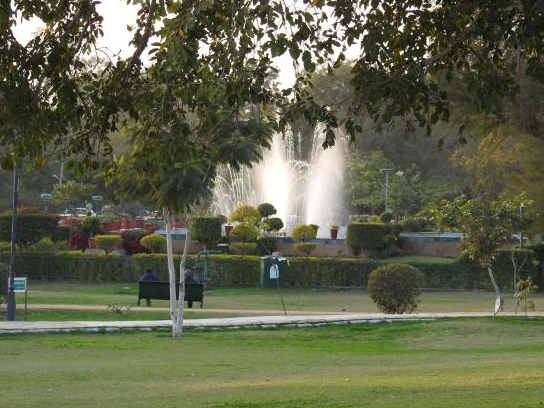
Central Park is one of the largest and most peaceful green spaces in Jaipur, located in the heart of the city near Statue Circle. It features lush gardens, walking and jogging tracks, musical fountains, and beautifully maintained landscapes.
A major highlight is the tallest national flag in Rajasthan, hoisted on a monumental pole. The park is popular with morning walkers, bird watchers, and those seeking a quiet escape from the city buzz.
One of Jaipur’s largest green spaces, perfect for morning walks or relaxation. It features a musical fountain, sculptures, and the largest Indian flag on a monumental flagpole.
14. Patrika Gate
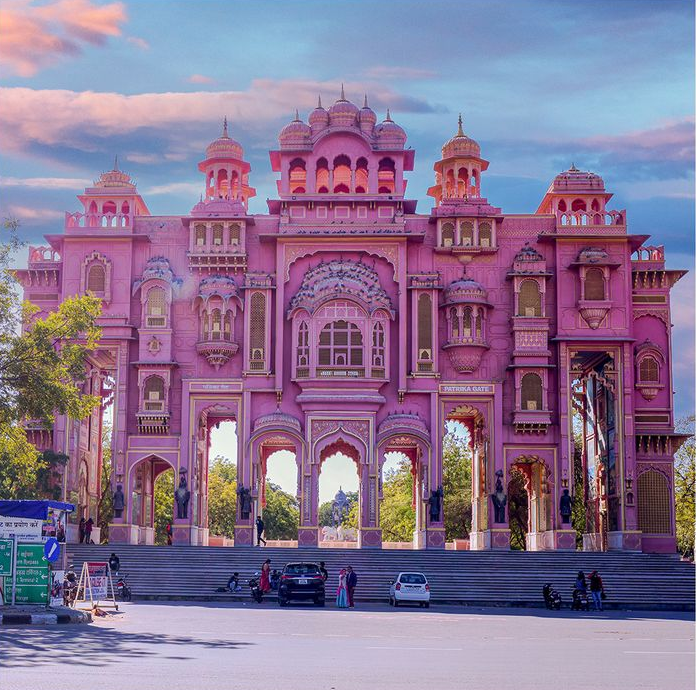
Patrika Gate is a stunning and colorful gateway located at the entrance of Jawahar Circle Garden in Jaipur. Known for its intricately hand-painted archways, each section of the gate represents different regions and cultural elements of Rajasthan.
With its rich detailing, vibrant colors, and traditional motifs, Patrika Gate has become one of the most Instagram-worthy spots in Jaipur. It's a perfect blend of art, architecture, and culture—making it a must-visit for photographers and cultural enthusiasts.

 Kaba Gandhi No Delo - The Ancest..
Kaba Gandhi No Delo - The Ancest.. Jama Masjid, Junagadh - A Timele..
Jama Masjid, Junagadh - A Timele.. Gurudwara Bangla Sahib - Spiritu..
Gurudwara Bangla Sahib - Spiritu.. Pangong Tso (Pangong Lake) Trave..
Pangong Tso (Pangong Lake) Trave.. Thanjavur Tourism - Brihadeeswar..
Thanjavur Tourism - Brihadeeswar.. Sarita Udyan, Gandhinagar - A Se..
Sarita Udyan, Gandhinagar - A Se.. Triveni Ghat Rishikesh - Ganga A..
Triveni Ghat Rishikesh - Ganga A.. Children’s Park, Gandhinagar -..
Children’s Park, Gandhinagar -.. Adalaj Stepwell, Gandhinagar - T..
Adalaj Stepwell, Gandhinagar - T.. Nubra Valley & Diskit Monastery ..
Nubra Valley & Diskit Monastery .. Vadodara (Baroda) - The Cultural..
Vadodara (Baroda) - The Cultural.. Kanchipuram - The City of Thousa..
Kanchipuram - The City of Thousa.. Chandigarh - The Modern City Bea..
Chandigarh - The Modern City Bea.. Bhopal: The City of Lakes - A Co..
Bhopal: The City of Lakes - A Co.. Sardar Patel Planetarium, Vadoda..
Sardar Patel Planetarium, Vadoda..